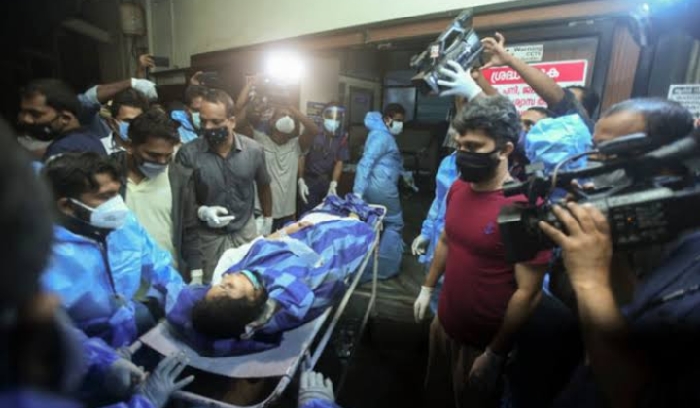
Kozhikode, Aug 8: A family of five, returning to their hometown at Koducalli in Kozhikode from Dubai, were aboard the fateful Air India Express flight that crash-landed at the Kozhikode airport claiming at least 18 lives on Friday.
Saifudheen, 40, is a businessman in Dubai. During the vacation when schools were closed here, his wife Fasalunnisa travelled, along with their children Muhammad Shahil, Fathima Sana and Aysha Shanza, to meet her husband.
On Friday, they were all travelling in the Air India aircraft to Kozhikode.
All five have received injuries and have been admitted to Baby Memorial Hospital Kozhikode except Sana, who is admitted to Al Shifa Hospital at Perinthalmanna in Malappuram.
"Saifudheen is my uncle. He and his family members were returning from Dubai when this unfortunate incident occurred. We were informed about the mishap at 8 pm. Now the family members have been shifted to Baby Memorial Hospital and everyone is fine now," Muhammad Salih, nephew of Saifudheen said.
The death toll in the flight crash landing incident at Kozhikode International Airport in Kerala rose to 18, including two pilots, Civil Aviation Minister Hardeep Singh Puri said on Saturday.
The minister said that he will visit the Kozhikode airport to take stock of the situation.
Two special relief flights have been arranged from Delhi and one from Mumbai for rendering humanitarian assistance to all the passengers and the family members.
Aircraft Accident Investigation Bureau (AAIB), Directorate General of Civil Aviation (DGCA) and Flight Safety Departments have reached to investigate the incident, the Air India Express stated.






Comments
The day is not too long to fight for Muslim Freedom/Indipendent - India will FIRE....
That means bakht indian are easily fooled by their cheddi leaders from knowing the TRUTH of WORSHIPING ONE GOD... (NA TASYA PRATIMA ASTI) and these cheddis very easily CONTROL these IGNOrANTS of their GOD given LIFE and BLIND them from understanding their own religion .... Swami AGNIVESH is telling the TRUTH but cheddis blinded the Bhakts so shakuningly that they ignored truth and and stand with the cheddis cos of their religious IGNORANT... Learn from AGNIWESH, cow is not your mother or God its an ANIMAL created by ONE MERCIFUL GOD for human sustenance thru milk or meat... Human beings are an intelligent creation of GOD, if they dont try to know this ONE GOD who created all that exists, then they are really easily FOOLED by the evils of the Society. Wake up guys dont be FOOLS of our time
Yea there is no wonder if one day may afgan talaban enters india to sacrifice their life to protect muslims from crime of saffron talaban killings of innocent muslims.
Well said Mr. Taroor. You are totally right. Even its dung has value also.
Safer to be 'a ugly than a wife of Shashi Tharoor: Sunanda Pushkar
Add new comment